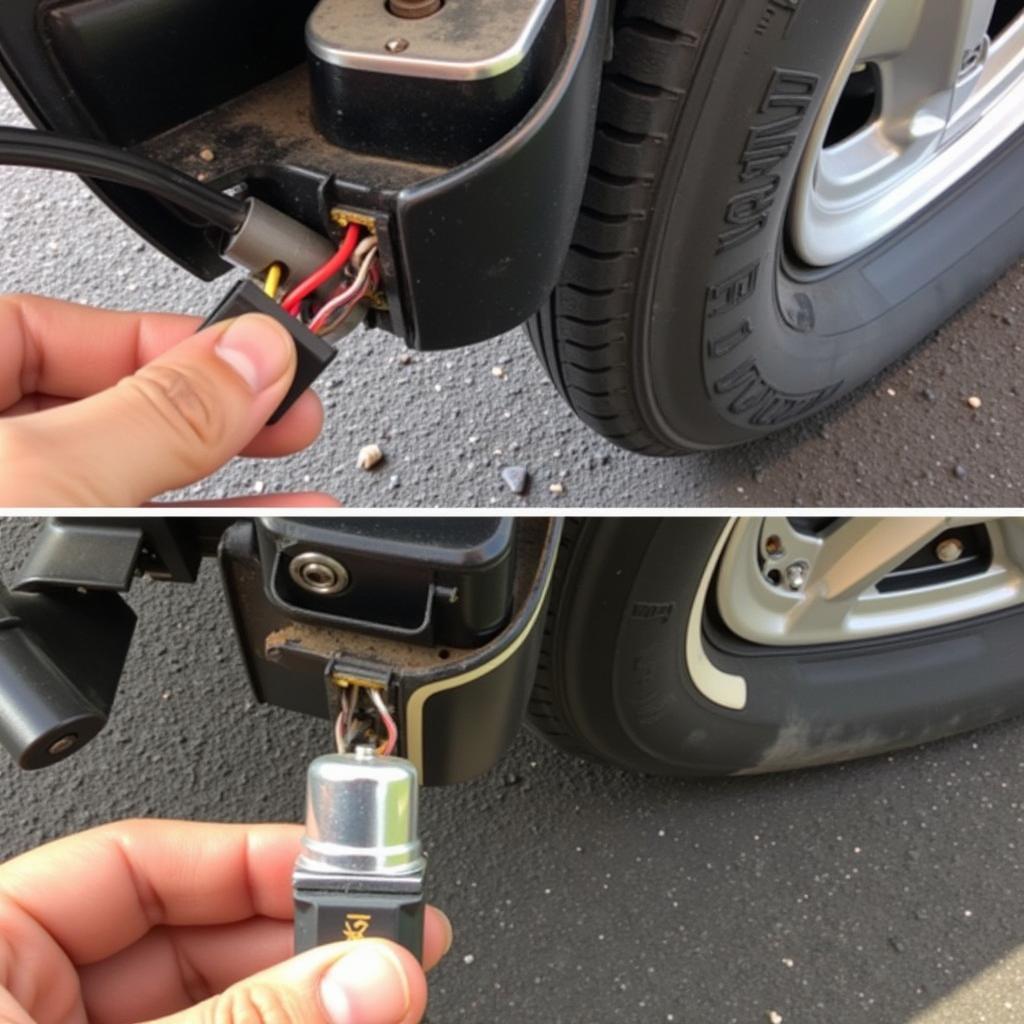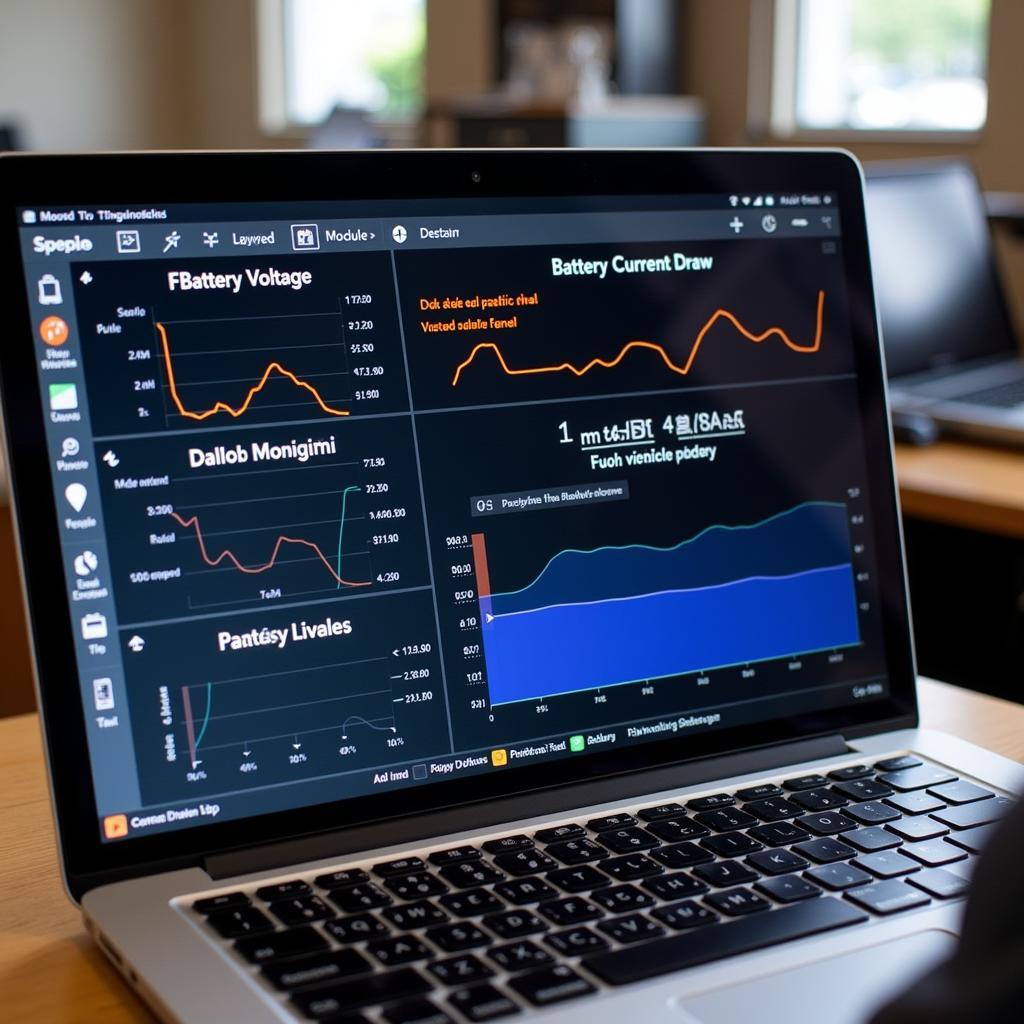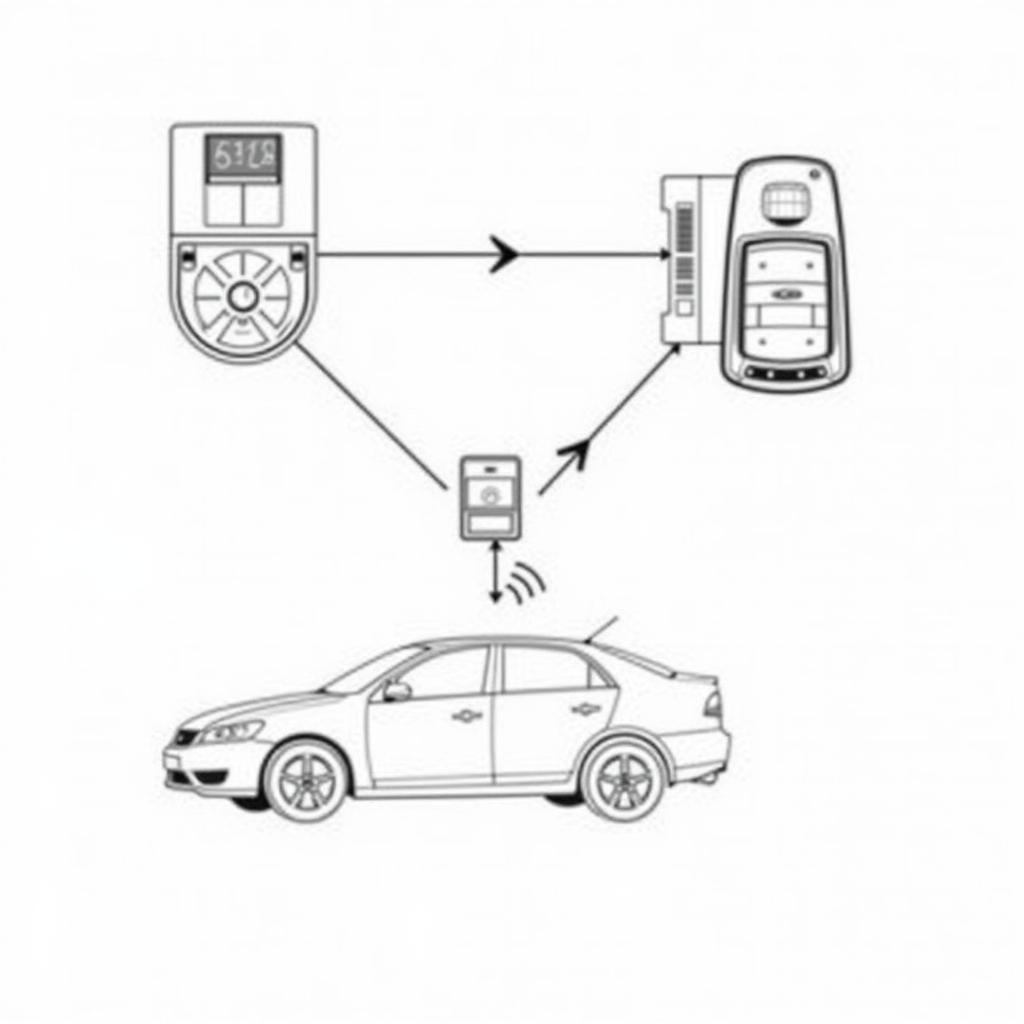The brake warning light on your 1967 Ford Mustang is a crucial safety feature, signaling potential issues within your braking system. If you’re experiencing problems with your 67 Mustang brake warning light switch, this comprehensive guide is here to help you diagnose and potentially fix the issue.
Understanding the Brake Warning Light System
Before diving into troubleshooting, it’s essential to grasp how the brake warning light system operates in your classic Mustang. The system serves two primary functions:
-
Alerting Low Brake Fluid: The most common reason for the light to illuminate is a low brake fluid level. The switch, usually located in the master cylinder, detects the drop in fluid and triggers the warning light.
-
Indicating Hydraulic System Issues: If the light stays on or flickers even with sufficient brake fluid, it might indicate a problem within the hydraulic system, such as a leak or a malfunctioning brake caliper.
Common Causes and Solutions for a 67 Mustang Brake Warning Light Switch Problem
Several factors can lead to issues with your brake warning light switch:
1. Faulty Brake Warning Light Switch
The switch itself can wear out or malfunction over time. This is often the culprit if the light behaves erratically or doesn’t illuminate despite other components working correctly.
Solution: Replace the brake warning light switch with a new one compatible with your 1967 Mustang.
 Replacing Brake Warning Light Switch on a 67 Mustang
Replacing Brake Warning Light Switch on a 67 Mustang
2. Low Brake Fluid Level
As mentioned earlier, low brake fluid is the most frequent reason for the warning light to activate. This could be due to normal brake pad wear, a leak in the system, or a recent brake job that hasn’t been topped off.
Solution: Check your brake fluid reservoir. If the level is low, carefully add the appropriate brake fluid for your Mustang until it reaches the “Full” line.
3. Brake Fluid Leak
A leak anywhere in the brake system, from the master cylinder to the brake lines and calipers, can lead to a drop in brake fluid level and trigger the warning light.
Solution: Thoroughly inspect all brake components for any signs of leakage, such as wet spots or fluid trails. If a leak is detected, immediate repair is crucial. It’s best to consult a qualified mechanic for this task.
4. Stuck or Malfunctioning Brake Caliper
A sticking or malfunctioning brake caliper can cause uneven pressure in the hydraulic system, potentially triggering the brake warning light.
Solution: Check the operation of your brake calipers. If one feels stuck or is not releasing properly, it may need to be rebuilt or replaced.
5. Electrical Issue
While less common, a problem with the wiring or the warning light bulb itself can cause the light to malfunction.
Solution: Inspect the wiring harness connected to the brake warning light switch for any damage or loose connections. Also, check if the bulb is burnt out and replace it if necessary.
How Does the Brake Warning Light Switch Work?
The brake warning light switch in your 1967 Mustang is a pressure-sensitive switch usually integrated into the master cylinder. When the brake fluid level drops below a certain point or there’s a significant pressure difference in the hydraulic system, the switch closes an electrical circuit. This action completes the circuit to the warning light bulb, causing it to illuminate and alert the driver of a potential issue.
When to Seek Professional Help
While some brake warning light issues can be addressed with basic DIY troubleshooting, certain situations necessitate the expertise of a qualified mechanic. If you encounter any of the following, seek professional assistance:
- You’re uncomfortable working with brake components.
- You’re unable to identify the root cause of the problem.
- The issue persists even after attempting the solutions outlined above.
- You suspect a serious issue with your brake system, such as a major leak or a malfunctioning master cylinder.
1967 mustang brake warning light switch
Conclusion
Addressing brake warning light issues promptly is vital for ensuring the safety and drivability of your 1967 Ford Mustang. By understanding the common causes and solutions, you can confidently troubleshoot basic problems. However, never hesitate to consult a qualified mechanic for complex issues or if you’re unsure about tackling the repair yourself. Remember, a well-maintained brake system is paramount for your safety and the longevity of your classic car.
mustang brake warning light switch
FAQs about 67 Mustang Brake Warning Light Switch Issues
1. Can I drive my Mustang with the brake warning light on?
It’s strongly advised against driving with the brake warning light illuminated. It indicates a potential problem with your brake system that could lead to reduced braking performance or even complete brake failure.
2. How often should I check my brake fluid level?
It’s a good practice to check your brake fluid level at least once a month. Doing so as part of your regular vehicle inspection can help you detect potential issues early on.
3. What type of brake fluid should I use in my 67 Mustang?
Refer to your owner’s manual for the recommended brake fluid type. Generally, classic Mustangs use DOT 3 brake fluid.
4. How long does it take to replace a brake warning light switch?
Replacing the brake warning light switch is a relatively straightforward procedure that can usually be completed in under an hour.
5. Can a bad brake light switch cause the brake warning light to come on?
While both switches are part of the braking system, they are separate components. A malfunctioning brake light switch will generally not cause the brake warning light to illuminate.
whow does the brake warning on 1968 mustang
Remember, your safety is paramount. Don’t hesitate to seek professional help when dealing with brake-related issues.



